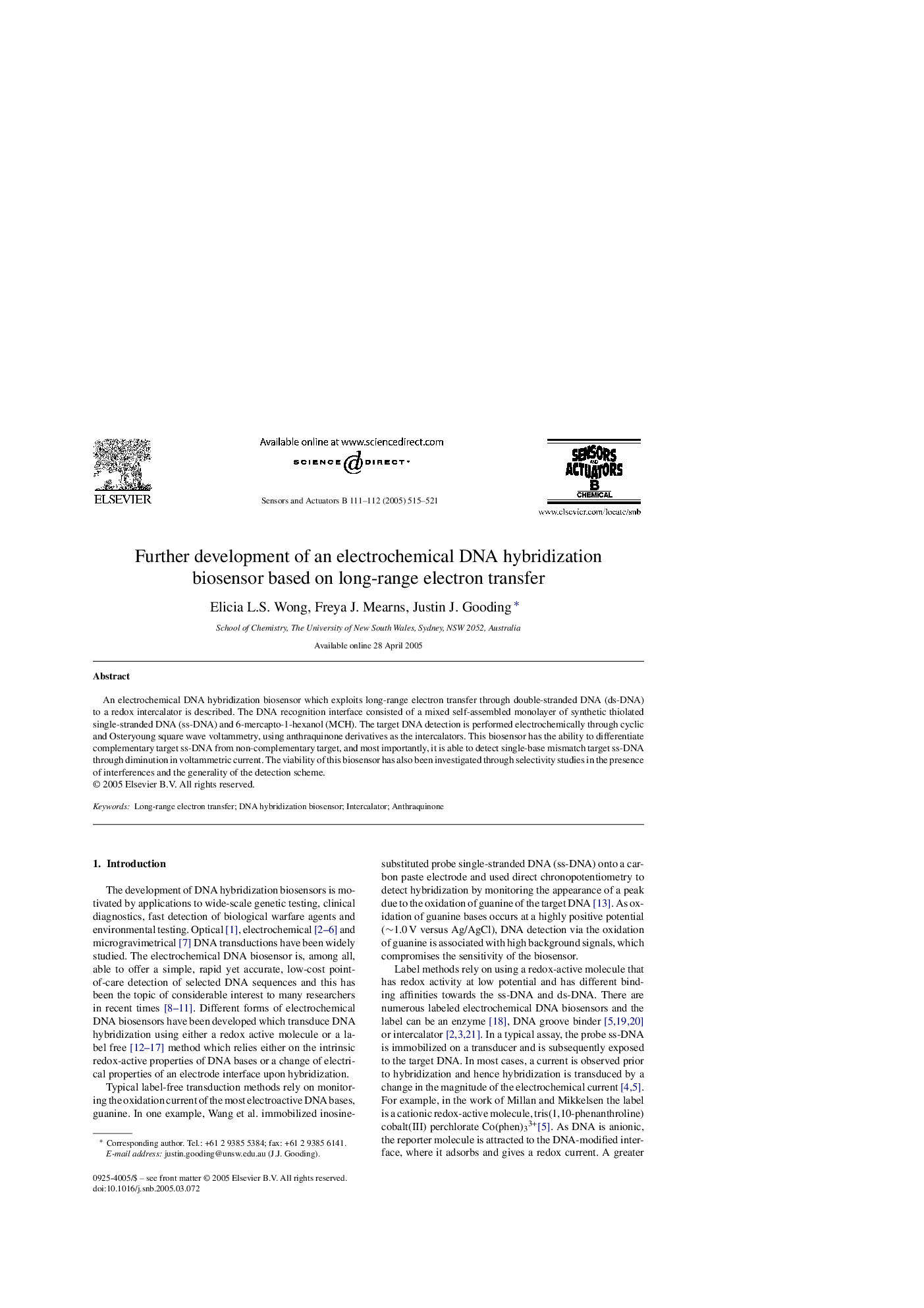| Article ID | Journal | Published Year | Pages | File Type |
|---|---|---|---|---|
| 9700854 | Sensors and Actuators B: Chemical | 2005 | 7 Pages |
Abstract
An electrochemical DNA hybridization biosensor which exploits long-range electron transfer through double-stranded DNA (ds-DNA) to a redox intercalator is described. The DNA recognition interface consisted of a mixed self-assembled monolayer of synthetic thiolated single-stranded DNA (ss-DNA) and 6-mercapto-1-hexanol (MCH). The target DNA detection is performed electrochemically through cyclic and Osteryoung square wave voltammetry, using anthraquinone derivatives as the intercalators. This biosensor has the ability to differentiate complementary target ss-DNA from non-complementary target, and most importantly, it is able to detect single-base mismatch target ss-DNA through diminution in voltammetric current. The viability of this biosensor has also been investigated through selectivity studies in the presence of interferences and the generality of the detection scheme.
Related Topics
Physical Sciences and Engineering
Chemistry
Analytical Chemistry
Authors
Elicia L.S. Wong, Freya J. Mearns, Justin J. Gooding,
